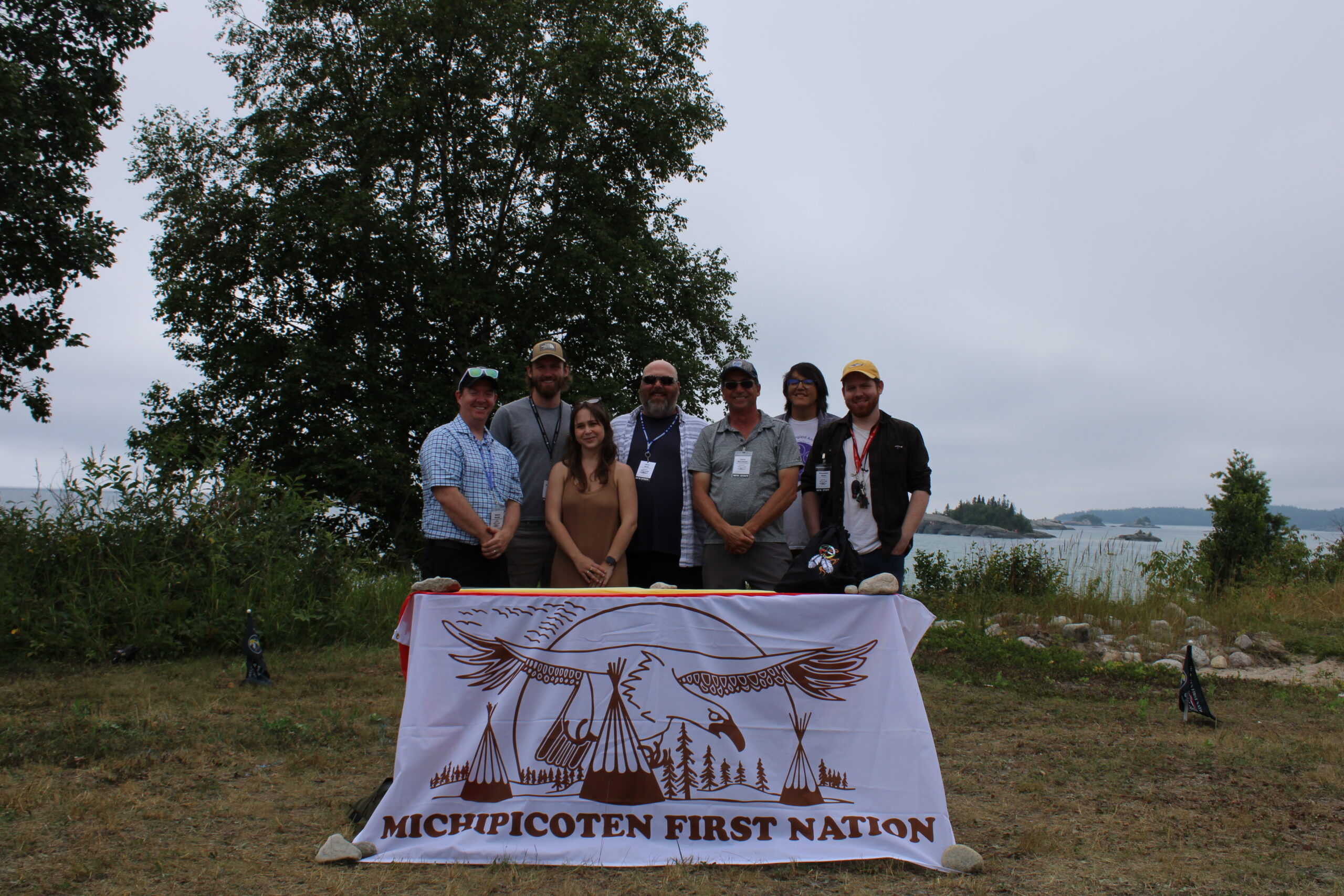
“We’re constantly seeing new species that previously weren’t observed by Elders and community members,” says Jessica Zadori, the biodiversity coordinator with Michipicoten First Nation. “And that’s creating challenges with both medicinal plants, as well as crowding of access roads.”
Michipicoten First Nation (MFN) is located on the shores of Lake Superior, within a mineral-rich gold belt that attracts significant industry. The primary invasive species of concern to the MFN are those common in southern Ontario that are now extending their range northward, largely through transportation by vehicles. These species include bindweed, common mullein, knapweed, and burdock.
MFN is taking on-the-ground action to prevent the spread of invasive plants in Gros Cap 49. As grant recipients of the 2024 Invasive Species Action Fund (ISAF), MFN is implementing site-specific wash stations as part of the Clean Equipment Protocol developed by the MFN Lands department. These stations will ensure that construction equipment and contractor vehicles will be washed to remove the seeds of invasive plants before entering the First Nation community.


The Clean Equipment Protocol (CEP) is based on best management practices developed by researchers, industry professionals, and government. MFN has made their CEP specific to the species present in the Michipicoten area. After developing the protocol to a standard that the First Nation is comfortable with, the protocol and an associated checklist will be sent to industries that are planning to enter the traditional territory. In conjunction with the wash stations, this will ensure that any vehicles entering meet specific standards to prevent the spread and establishment of invasive plants.
“When you get into clean equipment, especially with invasive species, you really have to follow the holistic process because if you miss one step, it allows them to thrive in these newly disturbed areas,” Jessica explained. “You have to be on top of the management aspect at those sites to mitigate a larger spreading.”
During the initial phase of this project, MFN conducted a baseline assessment to identify invasive plants in the areas where the wash stations would be constructed. They also removed existing invasive plants to start with a “clean slate,” before implementing the CEP. They plan to conduct a final cleanup and assessment at the end of October, with the help of three land guardians from the MFN Lands Department.
One of the main challenges MFN faces is capacity issues, making it difficult to manage the volume of requests from industries wanting to enter the area and ensuring they follow each step of the CEP process.
“The ISAF funding has provided us with a kind of solution to that capacity problem,” Jessica said. “It’s allowed our departments to have the time and resources to put into the CEP itself and really move it from concept to action, which I guess is right in the fund’s name.”
With the help of the ISAF funding, they have been able to finish the protocol, create the checklist, and construct the washing sites. They also trained 20 staff members across various departments to operate the wash stations, and plan to involve youth and community volunteers for the final invasive plant removal. This will help to bridge the gap between the MFN departments and the community members, who are not only interested in learning about invasive species but also in understanding what is being done to mitigate them and how they can get involved.


An unexpected challenge MFN has faced with this project is changing the culture surrounding equipment cleaning within these industries. “Industry isn’t used to being asked to arrive with clean equipment or to wash and follow these extra steps,” Jessica explained.
However, with climate change allowing new species to establish and spread in remote areas, preventing their introduction is more important than ever before. “I think as a First Nation, we have a responsibility to protect Mother Earth and Her resources. And I think once the reasoning behind the requirement for the Clean Equipment Protocol is explained to the proponents, the process does move smoother. Most of them have been very understanding and happy to complete the protocol,” Jessica continued.
The long-term goals of the project are to continue improving and expanding the CEP. MFN hopes to incorporate feedback from other departments and industry proponents to make the protocol even more effective. The next step is to expand the protocol to recreational use for community members, as well as the Wawa community beyond MFN.
When asked what advice she would give to other communities that are trying to tackle similar issues with invasive species, Jessica said “I ask myself a lot ‘how do you get started on such a problem that seems so widespread that is increasing with climate change?’ It feels impossible to tackle, so I think ultimately starting small, even with just education, is key. Educate yourself on what’s in the area and how to identify and remove it. Once you start down the path, it gets easier.”
She added, “We’re always willing to help others take that first step, share our experiences, and explain what we’ve done. I think ultimately that improves the process overall, and that continued improvement is really important. I think if we work as a community at the Nation, municipality, government, and industry level, it’ll ultimately result in the best outcomes for prevention and mitigation.”
The call for applications to the 2025 Invasive Species Action Fund is now open until January 15, 2025. For more information and to apply, visit here. To receive more updates on grant opportunities, subscribe to the Invasive Species Center.
